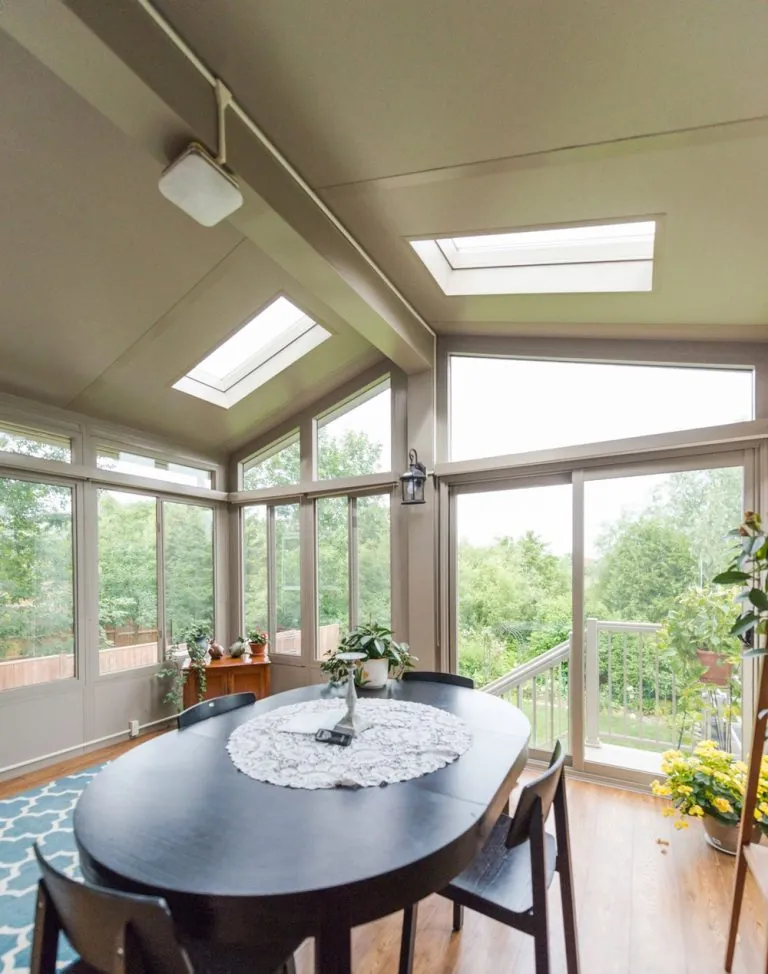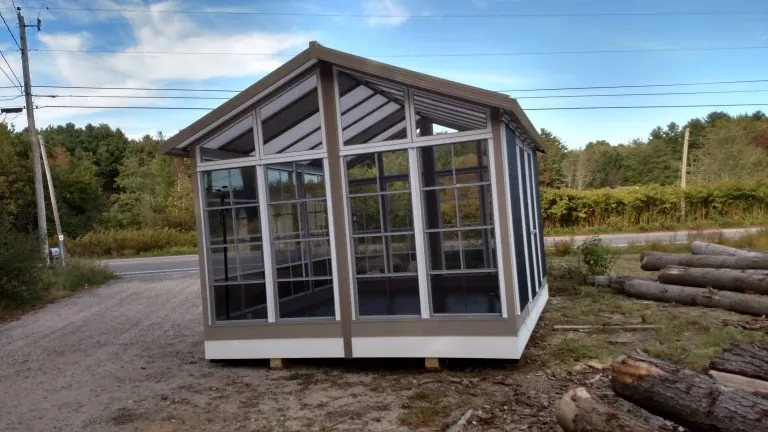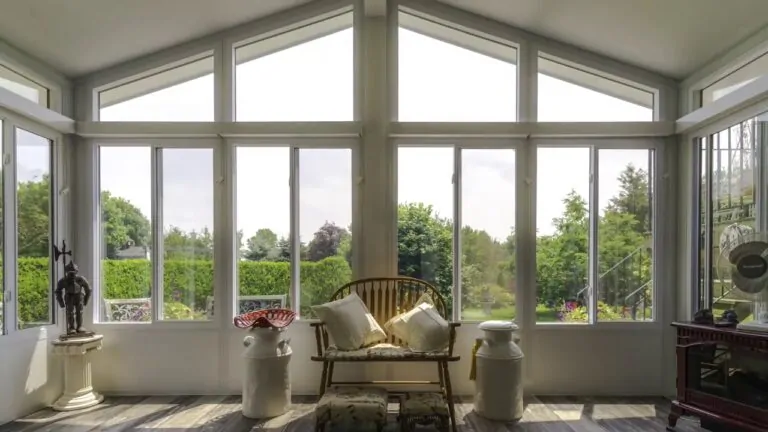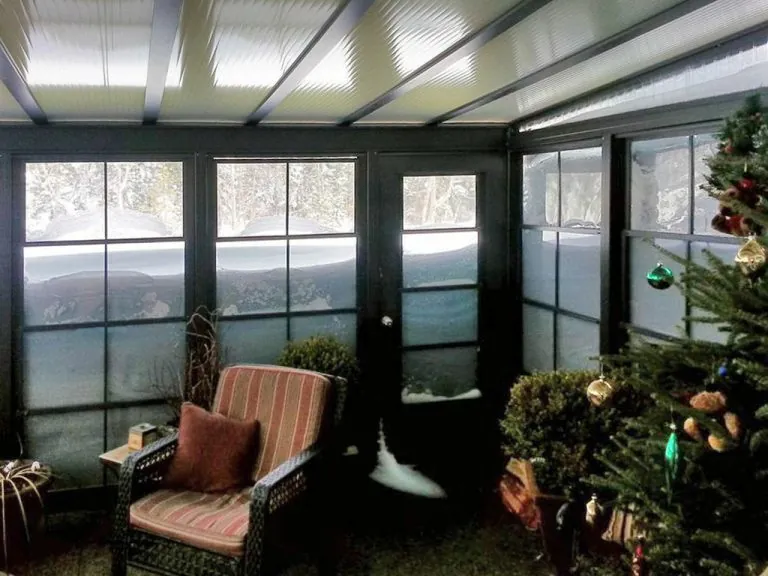You want more light and more space, but you also want a sunroom that looks right on a classic Portland home. At the same time, it needs to handle cold snaps, long winters, and nor’easters without problems. This guide shows how to match rooflines, windows, and materials to Maine’s Cape, Greek Revival, and Shingle-style homes.
You’ll also learn basic code notes, approval steps, and comfort tips for year-round use. If you want help checking your plan, you can always ask questions about porch or sunroom designs in Portland to make sure you’re on the right track.
Why the Right Plan Matters in Portland
Portland has a long heating season, so good insulation, tight air sealing, and smart glass choices make a big difference. These details keep a sunroom warm in winter without wasting energy. Coastal air, salty moisture, and stormy shoulder seasons can wear down exterior materials. That’s why Maine homes need durable finishes and good water management to protect siding, sills, and foundations.
How to Honor Maine’s Classic Styles
Cape Style: Keep things simple and balanced. Use smaller, evenly spaced windows and try to match the rhythm of your home’s existing openings.
Greek Revival: Pay attention to roof pitch, trim scale, and column spacing. When these match, the addition naturally blends with the original architecture.
Shingle Style: Use flowing shingles, wide porches, soft curves, and low horizontal massing. These details help the sunroom feel native to the coast.
Which Sunroom Shapes Blend In
Match the roof form first. Neighbors and review boards often focus on the roof pitch and eave lines.
Gable or cathedral sunrooms fit many Capes and Greek Revival homes because they match the main roof shape. Low-slope studio roofs sit quietly on the back of Shingle-style homes and usually stay out of sight. If you prefer a more glass-forward look, solariums can work well on private sites, especially when trimmed with divided lites and muted colors.
Materials and Glass That Work in Maine
Structure and exterior: Wood interiors feel warm and traditional. Outside, aluminum-clad or fiberglass frames stand up better to salt air and wet weather.
Energy comfort: In climate zone 6, choose insulated frames and assemblies that meet Maine’s energy code (based on the IECC). Many towns also encourage stronger “stretch code” options for better performance.
Glazing: Low-E double or triple-pane windows improve winter comfort. Tune the Solar Heat Gain Coefficient (SHGC), add interior shades, and use small overhangs to manage glare and shoulder-season heat.
Codes and Approvals in Portland
Portland follows the Maine Uniform Building and Energy Code (MUBEC). Four-season sunrooms must meet state energy and structural requirements for residential additions. Many towns in Maine use 48-inch frost depth for footings, though inspectors may adjust based on site conditions.
Snow load requirements vary by town. Use Maine’s ground snow load map to size your roof and structural connections.
If your home is in a historic district or is designated as historic, exterior changes require review by Portland’s Historic Preservation Office. Starting early helps the process go smoothly.
Siting and Sun Control for Comfort
Southern and southeast sunrooms capture warm winter light and free heat from the sun, which helps comfort on cold days. West-facing sunrooms often need extra shade. Low-E glass, interior shades, small overhangs, and operable windows help control glare and keep the room comfortable during spring and fall.
Which Sunroom Fits Which Maine Style
| Sunroom Type | Fits These Maine Homes | Why It Works |
|---|---|---|
| Gable or cathedral | Greek Revival, many Capes | Matches roof pitch and street-facing proportions. |
| Low-slope studio | Shingle Style, rear of Capes | Keeps a low profile under long eaves; blends quietly. |
| Partial-glass bump-out | Capes, small lots | Adds light without overwhelming the simple main façade. |
| Glass-heavy solarium | Larger Shingle or private sites | Big views with privacy; looks softer with divided lites and natural trim. |
Details Neighbors and Review Boards Appreciate
Match trim widths, sill shapes, and corner boards so the new work looks like it belongs. Use siding and colors that match the main home. In visible areas, simpler trim and neutral palettes blend best. Many homeowners also step back the sunroom or lower its roof so it stays secondary in scale.
Coastal Maintenance, Simplified
Salt, wind, and winter moisture age finishes faster near the coast. Choose hardware and coatings rated for marine or severe weather exposure. Manage winter condensation by sealing transitions well, controlling indoor humidity, and trimming back plants that crowd the glass.
FAQs
Do I need historic approval in Portland?
Yes, if your home is designated or inside a historic district. Exterior changes must go through Historic Preservation Review.
Can I build a true four-season sunroom in Maine?
Yes, with climate-zone-6 insulation, strong air sealing, and high-performance glass.
How deep are footings in Maine?
Many towns require around 48 inches for frost protection, but your inspector has the final say.
How do I size the roof for snow?
Use the state ground snow load map and account for drifting near roof breaks and eaves.
Which roof style passes historic review most often?
Gable or cathedral roofs often match Greek Revival and Cape-style homes best.
A Simple Next Step
For help reviewing your idea, request a friendly, no-pressure consultation with Sunspace By Sunrise Sunrooms. We can compare your concept to Portland’s review steps and Maine’s energy code so you can move forward with confidence.






